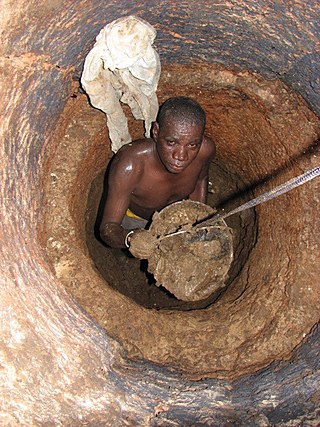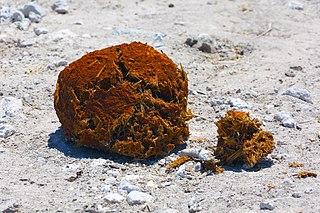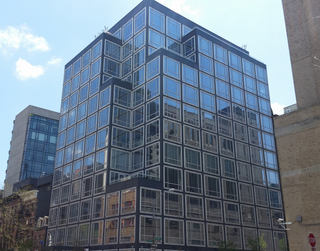
Toilet humour, potty humour or scatological humour, is a type of off-colour humour dealing with defecation, urination and flatulence, and to a lesser extent vomiting and other bodily functions.
Curb or kerb, the raised edge of a raised footpath or roadway.

World Toilet Day (WTD) is an official United Nations international observance day on 19 November to inspire action to tackle the global sanitation crisis. Worldwide, 4.2 billion people live without "safely managed sanitation" and around 673 million people practice open defecation. Sustainable Development Goal 6 aims to "Ensure availability and sustainable management of water and sanitation for all". In particular, target 6.2 is to "End open defecation and provide access to sanitation and hygiene". When the Sustainable Development Goals Report 2020 was published, United Nations Secretary-General António Guterres said, "Today, Sustainable Development Goal 6 is badly off track" and it "is hindering progress on the 2030 Agenda, the realization of human rights and the achievement of peace and security around the world".
Dog poop girl (Korean: 개똥녀) refers to a 2005 incident in South Korea which was one of the first internationally reported occurrences of doxing. In a Seoul subway car, a young woman's lap dog defecated inside the train, and the woman was photographed on another passenger's mobile phone camera after she did not clean up the mess despite numerous requests. The photos were posted on a popular Korean website and widely distributed; the woman was later identified, and her personal information was published online. The woman was publicly shamed and quit her university. Newspaper editorials then addressed the issues concerning Internet vigilantism and privacy concerns.

A pooper-scooper, or poop scoop, is a device used to pick up animal feces from public places and yards, particularly those of dogs. Pooper-scooper devices often have a bag or bag attachment. 'Poop bags' are alternatives to pooper scoopers, and are simply a bag, usually turned inside out, to carry the feces to a proper disposal area. Sometimes, the person performing the cleanup is also known as the pooper-scooper.

A curb or kerb is the edge where a raised sidewalk or road median/central reservation meets a street or other roadway.

The New York City Department of Transportation (NYCDOT) is the agency of the government of New York City responsible for the management of much of New York City's transportation infrastructure. Ydanis Rodriguez is the Commissioner of the Department of Transportation, and was appointed by Mayor Eric Adams on January 1, 2022. Former Commissioners have included Polly Trottenberg, Janette Sadik-Khan, and Iris Weinshall. The NYCDOT has a training center in eastern Queens.

Manual scavenging is a term used mainly in India for "manually cleaning, carrying, disposing of, or otherwise handling, human excreta in an insanitary latrine or in an open drain or sewer or in a septic tank or a pit". Manual scavengers usually use hand tools such as buckets, brooms and shovels. The workers have to move the excreta, using brooms and tin plates, into baskets, which they carry to disposal locations sometimes several kilometers away. The practice of employing human labour for cleaning of sewers and septic tanks is also prevalent in Bangladesh and Pakistan. These sanitation workers, called "manual scavengers", rarely have any personal protective equipment. The work is regarded as a dehumanizing practice.

Waste management has been a concern for human civilizations throughout history. The earliest known wastewater management system dates back to around 6500 BCE in present-day Syria, featuring sophisticated gutter systems and settling chambers. Ancient civilizations like the Roman Empire developed complex waste removal systems, including the Cloaca Maxima, which emptied into the Tiber River. The Maya of Central America had monthly rituals for burning garbage. However, access to these early waste management systems was often limited to higher socioeconomic classes.

The New York City Department of Sanitation (DSNY) is the department of the government of New York City responsible for garbage collection, recycling collection, street cleaning, and snow removal. The DSNY is the primary operator of the New York City waste management system.

MTA Regional Bus Operations (RBO) is the surface transit division of the Metropolitan Transportation Authority (MTA). It was created in 2008 to consolidate all bus operations in New York City operated by the MTA. As of December 2024, MTA Regional Bus Operations runs 238 local routes, 75 express routes, and 20 Select Bus Service routes. Its fleet of 5,840 buses is the largest municipal bus fleet in the United States and operates 24/7. In 2023, the system had a ridership of 730,924,600, or about 2,400,700 per weekday as of the third quarter of 2024.

The community boards of the New York City government are the appointed advisory groups of the community districts of the five boroughs. There are currently 59 community districts: twelve in the Bronx, eighteen in Brooklyn, twelve in Manhattan, fourteen in Queens, and three in Staten Island.

Feces are the solid or semi-solid remains of food that was not digested in the small intestine, and has been broken down by bacteria in the large intestine. Feces contain a relatively small amount of metabolic waste products such as bacterially altered bilirubin, and dead epithelial cells from the lining of the gut.

Rats in New York City are widespread, as they are in many densely populated areas. They are considered a cultural symbol of the city. For a long time, the number of rats in New York City was unknown, and a common urban legend declared there were up to five times as many rats as people. However, a 2023 study estimates that there are approximately 3 million rats in New York, which is close to a third of New York's human population.
The Motocrotte, officially called Caninette and informally chiraclette was a small motorized vehicle designed to vacuum up dog faeces in Paris and other French cities.

Open defecation is the human practice of defecating outside rather than into a toilet. People may choose fields, bushes, forests, ditches, streets, canals, or other open spaces for defecation. They do so either because they do not have a toilet readily accessible or due to traditional cultural practices. The practice is common where sanitation infrastructure and services are not available. Even if toilets are available, behavior change efforts may still be needed to promote the use of toilets. 'Open defecation free' (ODF) is a term used to describe communities that have shifted to using toilets instead of open defecation. This can happen, for example, after community-led total sanitation programs have been implemented.

Swachh Bharat Mission (SBM), Swachh Bharat Abhiyan, or Clean India Mission is a country-wide campaign initiated by the Government of India on 2 October 2014 to eliminate open defecation and improve solid waste management and to create Open Defecation Free (ODF) villages. The program also aims to increase awareness of menstrual health management. It is a restructured version of the Nirmal Bharat Abhiyan which was launched by the Congress in 2009.

Urban Glass House is a condominium building designed by American architect Philip Johnson located in the Hudson Square neighborhood of Manhattan, New York City. Completed in 2006, it was Johnson's final project, as he did not live to see construction finished. The building's name is a reference to Johnson's earlier Glass House, located in New Canaan, Connecticut, although the urban building bears little resemblance to the original. The interiors were designed by Annabelle Selldorf, an American designer and architect.

New York City's waste management system is a refuse removal system primarily run by the New York City Department of Sanitation (DSNY). The department maintains the waste collection infrastructure and hires public and private contractors who remove the city's waste. For the city's population of more than eight million, The DSNY collects approximately eleven thousand tons a day of garbage, including compostable material and recycling.
Walter Kacik was a designer known for his work on the Department of Sanitation's branding as well as the Curb Your Dog signs introduced in the 1960s in New York City.
















